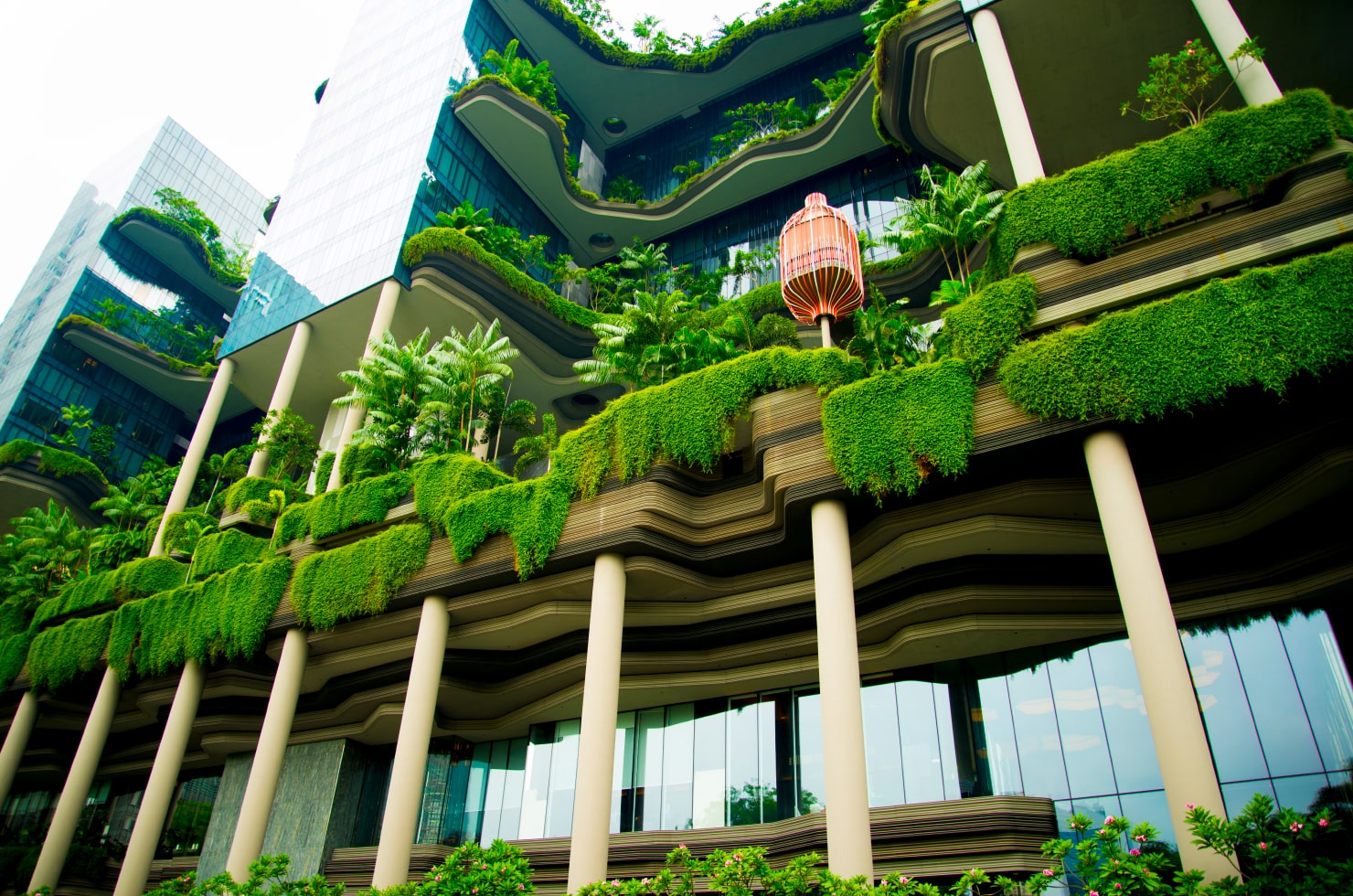Architecture has always been a reflection of the times, shaped by technological advancements, cultural shifts, and societal needs. From the ancient wonders of the world to modern-day skyscrapers, architecture is both an art form and a science that impacts every facet of our lives. As we move further into the 21st century, architecture is experiencing a radical transformation driven by key trends that are reshaping how buildings are designed, constructed, and lived in.
In this article, we will explore the key trends shaping the future of architecture, focusing on sustainability, technology, urbanization, and design innovation. These trends are influencing how architects approach their craft and how we experience the built environment.
1. Sustainability and Green Architecture
One of the most prominent trends in modern architecture is the growing emphasis on sustainability. With the global climate crisis becoming an increasingly urgent issue, architects are turning to sustainable practices that minimize environmental impact and promote the health and well-being of building occupants.
Sustainable architecture, often referred to as “green architecture,” focuses on reducing a building’s carbon footprint, using eco-friendly materials, and designing energy-efficient structures. Key elements of green architecture include:
- Energy-Efficient Design: Buildings are being designed to consume less energy through natural lighting, passive heating, and cooling, as well as the integration of renewable energy sources like solar panels, wind turbines, and geothermal systems.
- Sustainable Materials: Architects are choosing eco-friendly materials such as recycled steel, bamboo, and low-VOC (volatile organic compound) paints. These materials reduce a building’s environmental impact and promote healthier indoor air quality.
- Water Conservation: Water-efficient systems, like rainwater harvesting and low-flow fixtures, are becoming standard in many architectural designs. Landscape design is also incorporating drought-tolerant plants to reduce water consumption.
- Building Performance: The use of smart building technology allows for better monitoring and management of energy usage, helping buildings optimize their performance in real time.
As concerns about the environment continue to grow, sustainability will remain a central theme in architecture, guiding the creation of buildings that not only meet the needs of today but also protect the planet for future generations.
2. Smart Cities and Technology Integration
Technology is changing the way we design and build our cities. The concept of “smart cities” refers to urban areas that use digital technology to enhance performance, well-being, and reduce costs and resource consumption. The integration of technology into architectural design has already begun, and it will continue to play a significant role in shaping the future of cities and buildings.
Some key technological advancements influencing architecture include:
- Smart Buildings: Buildings are becoming increasingly “smart,” with IoT (Internet of Things) devices integrated into structures for real-time monitoring and control. These technologies allow for automated systems, such as lighting, temperature, and security, to be managed remotely or adjusted based on occupant preferences.
- 3D Printing: The advent of 3D printing has revolutionized construction by allowing architects to create intricate designs and produce building components on-site with minimal waste. This technology can help reduce construction time and costs while enabling more innovative design possibilities.
- Artificial Intelligence (AI) and Machine Learning: AI is being used to optimize building designs by analyzing vast amounts of data related to energy use, lighting, and traffic patterns. Machine learning algorithms can predict building performance, improving energy efficiency and reducing maintenance costs over time.
- Virtual Reality (VR) and Augmented Reality (AR): VR and AR technologies are transforming how architects visualize and present their designs. Through immersive simulations, architects and clients can experience spaces before they are built, making it easier to refine designs and reduce the risk of costly changes during construction.
As these technologies continue to evolve, they will provide architects with powerful tools to create more efficient, responsive, and sustainable buildings, while transforming the way we live in and interact with our built environment.
3. Urbanization and the Rise of Mixed-Use Spaces
The world is rapidly urbanizing, with more than half of the global population now living in cities. This trend is expected to continue, with urban populations projected to increase by nearly 2.5 billion by 2050. As cities grow, the demand for efficient and sustainable urban planning has never been greater.
One key trend in the future of architecture is the rise of mixed-use developments. These are buildings or neighborhoods that combine residential, commercial, and recreational spaces within a single development, allowing people to live, work, and play in close proximity. Mixed-use developments can help address several urban challenges:
- Reducing Urban Sprawl: By integrating residential and commercial spaces, mixed-use developments reduce the need for people to commute long distances, which helps mitigate traffic congestion and lowers carbon emissions.
- Promoting Walkability: With everything within walking distance, mixed-use developments foster a more pedestrian-friendly environment, encouraging healthier lifestyles and reducing reliance on cars.
- Creating Vibrant Communities: Mixed-use spaces foster a sense of community by bringing together people from different walks of life. These developments often include public spaces, parks, and cultural centers that enhance the quality of life for residents.
As urban populations continue to grow, mixed-use developments will play a critical role in creating more efficient and sustainable cities.
4. Biophilic Design and Natural Elements
Biophilic design is another trend that is reshaping the future of architecture. This design philosophy emphasizes the connection between humans and nature, with the goal of creating spaces that improve well-being, productivity, and creativity by incorporating natural elements into the built environment.
Key features of biophilic design include:
- Natural Light: Maximizing the use of natural light through large windows, skylights, and open floor plans is a fundamental principle of biophilic design. Natural light has been shown to improve mood, productivity, and overall well-being.
- Indoor Plants: Bringing plants into the interior of buildings not only enhances the aesthetic appeal but also purifies the air and creates a calming atmosphere. Vertical gardens and green walls are becoming increasingly popular in office and residential spaces.
- Natural Materials: Using materials like wood, stone, and bamboo creates a sense of connection to nature while contributing to the sustainability of a building. These materials also help regulate indoor temperature and improve acoustics.
- Views of Nature: Designing buildings with views of outdoor green spaces, gardens, or bodies of water can have a significant positive impact on the mental health of occupants.
As the focus on health and well-being grows, biophilic design will continue to be a vital component of architectural trends.
5. Adaptive Reuse and Preservation of Heritage
Adaptive reuse is the process of repurposing old buildings for new uses instead of demolishing them. This trend is growing in popularity as cities face increasing pressure to accommodate growing populations while preserving historical and cultural heritage.
Some of the benefits of adaptive reuse include:
- Sustainability: By repurposing existing buildings, architects reduce the need for new construction materials and decrease the environmental impact of demolition and waste.
- Cultural Preservation: Adaptive reuse allows for the preservation of historic buildings and landmarks, maintaining the cultural identity of a city while giving old structures new life.
- Cost-Effectiveness: Adaptive reuse projects are often more cost-effective than new construction, as they make use of existing infrastructure and materials.
As the desire to preserve cultural heritage and minimize environmental impact continues to grow, adaptive reuse will remain an important trend in architecture.
6. Modular and Prefabricated Construction
Modular and prefabricated construction is revolutionizing the way buildings are designed and constructed. This approach involves assembling components of a building off-site in a factory, then transporting and assembling them on-site. The benefits of modular construction include:
- Speed: Modular buildings can be completed much faster than traditional construction, reducing overall project timelines.
- Cost Efficiency: Because modules are built in a factory setting, labor costs are lower, and waste is minimized. The assembly-line approach also allows for more consistent quality control.
- Sustainability: Modular buildings are often more energy-efficient, with improved insulation and tighter construction that reduces energy consumption.
As the demand for faster and more affordable construction grows, modular and prefabricated methods are likely to become more mainstream.
7. Minimalism and Simplified Design
Minimalism continues to be a dominant design trend in architecture, with a focus on simplicity, clean lines, and the reduction of unnecessary elements. This trend is driven by a desire for clarity and function over excess. Minimalism in architecture often features:
- Open Floor Plans: Minimalist designs often feature open, uncluttered spaces with an emphasis on natural light and functionality.
- Neutral Color Palettes: Neutral tones such as whites, grays, and natural wood finishes are common in minimalist design, creating calm and serene environments.
- Functional Furniture: The use of multifunctional furniture and built-in storage helps minimize clutter and maximize space.
Minimalism is especially popular in modern urban architecture, where space is limited and efficiency is key.
FAQs
1. What is green architecture?
Green architecture refers to buildings designed to minimize their environmental impact through energy-efficient systems, sustainable materials, and the integration of renewable energy sources.
2. How can smart technology improve architecture?
Smart technology allows for real-time monitoring of building systems, optimizing energy use, improving security, and enhancing the overall comfort of occupants.
3. What is biophilic design?
Biophilic design is the practice of incorporating natural elements such as light, plants, and materials into buildings to improve the well-being of occupants and foster a connection to nature.
4. What are the benefits of modular construction?
Modular construction is faster, more cost-effective, and often more sustainable than traditional construction methods, with reduced labor costs and waste.
5. What is adaptive reuse in architecture?
Adaptive reuse involves repurposing existing buildings for new uses, preserving their historical and cultural value while reducing the environmental impact of demolition.
6. What role does sustainability play in modern architecture?
Sustainability in architecture is essential to minimizing environmental damage, reducing energy consumption, and promoting a healthier living environment.
7. How is technology shaping the future of architecture?
Technology is influencing architecture through smart buildings,

